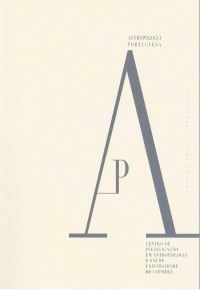Please use this identifier to cite or link to this item:
https://hdl.handle.net/10316.2/39077| DC Field | Value | Language |
|---|---|---|
| dc.contributor.author | Ferreira, Maria Teresa | - |
| dc.contributor.author | Cunha, Eugénia | - |
| dc.date.accessioned | 2016-06-27T11:43:37Z | |
| dc.date.accessioned | 2020-09-14T11:13:13Z | - |
| dc.date.available | 2016-06-27T11:43:37Z | |
| dc.date.available | 2020-09-14T11:13:13Z | - |
| dc.date.issued | 2014 | - |
| dc.identifier.issn | 0870-0990 | - |
| dc.identifier.issn | 2182-7982 (digital) | - |
| dc.identifier.uri | https://hdl.handle.net/10316.2/39077 | - |
| dc.description.abstract | Understanding the process of decomposition is critical in forensic practice, particularly for estimating the post-mortem interval (PMI). The knowledge of this process is of paramount importance in cemetery management, par ticularly in cases of overcrowding of cemeteries. Applying the principles of Taphonomy to a sample of 35 burials (18 males and 17 females, all adults; PMI from 3 to 83 years) of two municipal cemeteries in Figueira da Foz, we analysed the following parameters: decomposition, skeletal preservation, PMI, type and composition of the grave, age-atdeath and sex of the individual. This study showed that there were variations in the course of the decomposition of the individuals analysed, of which 14 were preserved (two mummified and ten saponified). The decomposition is dependent on the PMI, but this relationship is variable and non-linear, making it impossible to predict the state of decomposition of the cadaver only based on the PMI in order to properly programme the necessary exhumations for the management of funerary spaces. It became apparent that the legal period of three years is insufficient for the rotation of the graves. It was also observed that the type of grave, clothing and the presence of diapers influenced the decomposition of corpses. | eng |
| dc.description.abstract | Compreender a decomposição cadavérica é fundamental na prática forense, nomeadamente para a estimativa do intervalo pós-morte (PMI1), sendo também relevante na gestão funerária, tarefa cada vez mais difícil devido à sobrelotação dos cemitérios dos grandes centros populacionais. Aplicando os princípios da Tafonomia a uma amostra de 35 inumações (18 indivíduos do sexo masculino e 17 do feminino, todos adultos; PMI entre 3 e 83 anos) de dois cemitérios municipais da Figueira da Foz, analisaram-se os seguintes parâmetros: decomposição cadavérica, preservação esquelética, PMI, tipo e composição da sepultura, idade e sexo do indivíduo. Este estudo mostrou que houve variações no desenrolar do processo de decomposição dos cadáveres analisados, dos quais 14 sofreram fenómenos de preservação (2 mumificaram e 10 saponificaram). A decomposição depende do PMI, mas esta relação é variável e não linear, tornando impossível prever o estado de decomposição do cadáver apenas com base no PMI de forma a programar devidamente as exumações/trasladações necessárias à gestão dos espaços funerários. Tornou-se evidente que o prazo legal de 3 anos é insuficiente para a rotação das sepulturas. Observou-se também que o tipo de sepultura, o vestuário e a presença de fralda tiveram influência na decomposição dos cadáveres. | por |
| dc.language.iso | por | - |
| dc.publisher | Imprensa da Universidade de Coimbra | - |
| dc.rights | open access | - |
| dc.subject | Forensic anthropology | eng |
| dc.subject | cemetery management | eng |
| dc.subject | decomposition | eng |
| dc.subject | post-mortem interval (PMI) | eng |
| dc.subject | Antropologia forense | por |
| dc.subject | gestão de cemitérios | por |
| dc.subject | decomposição cadavérica | por |
| dc.subject | intervalo pós-morte (PMI) | por |
| dc.title | A decomposição cadavérica e as dificuldades de gestão dos espaços funerários | por |
| dc.type | article | - |
| uc.publication.collection | Antropologia Portuguesa vol. 30/31 | - |
| uc.publication.firstPage | 77 | - |
| uc.publication.lastPage | 97 | - |
| uc.publication.location | Coimbra | - |
| uc.publication.journalTitle | Antropologia Portuguesa | - |
| uc.publication.volume | 30/31 | por |
| dc.identifier.doi | 10.14195/2182-7982_31_4 | - |
| uc.publication.digCollection | IP | - |
| uc.publication.digCollection | B1 | - |
| uc.publication.orderno | 5 | - |
| uc.publication.area | Ciências Sociais | - |
| uc.publication.manifest | https://dl.uc.pt/json/iiif/10316.2/39077/214632/manifest?manifest=/json/iiif/10316.2/39077/214632/manifest | - |
| uc.publication.thumbnail | https://dl.uc.pt/retrieve/11220148 | - |
| uc.itemId | 70969 | - |
| uc.thumbnail.uri | https://dl.uc.pt/iiif-imgsrv/11220104/dl!3!88!08!21!88082159429567747745821363954286607984 | - |
| item.grantfulltext | open | - |
| item.fulltext | With Fulltext | - |
| Appears in Collections: | Antropologia Portuguesa | |
Files in This Item:
| File | Description | Size | Format | |
|---|---|---|---|---|
| decomposicao_cadaverica_e_as_dificuldades.pdf | 16.24 MB | Adobe PDF |  |
Items in DSpace are protected by copyright, with all rights reserved, unless otherwise indicated.
